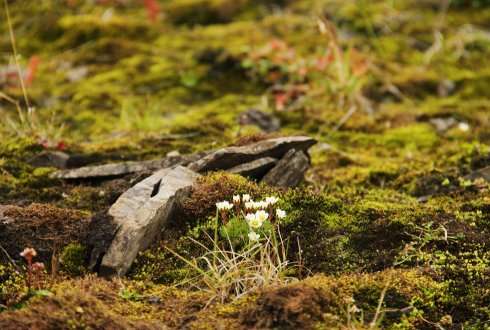Substantial overestimation of carbon uptake in the boreal region

Moss can only generate about one-third of the gross primary production (GGP) that vascular plants can, because of its much lower photosynthetic capacity. Therefore, differentiating moss from higher plants is critical in studying the carbon cycle of the boreal biome. A team led by Wenping Yuan (Beijing Normal University) and consisting of Eddy Moors (Alterra), Michiel van der Molen (Wageningen University) and colleagues show that the difference in photosynthetic capacity between these two plant functional types has never been explicitly included when estimating regional gross primary production in the boreal region, resulting in a substantial overestimation.
Based on flux tower data (similar to those measured at e.g. the Loobos site), they discuss in Nature Communications the relationship between the contribution of moss to the satellite-derived vegetation index and the resulting modelled GPP. This satellite-derived normalized difference vegetation index (NDVI), which is used for estimating gross primary production (GPP), often includes contributions from both mosses and vascular plants in boreal ecosystems. However, for the same NDVI, moss can generate only about onethird of the GPP that vascular plants can because of its much lower photosynthetic capacity.
Ecosystem productivity in boreal ecosystems
They also found that the existing substantial impacts of disturbances on ecosystem structure and composition have an often overlooked additional impact on ecosystem productivity in boreal ecosystems. Disturbances alter forest structure and vegetation composition and cause higher bryophyte cover in young stands. Increasing temperature in the northern high latitudes has resulted in well documented increases in frequency, intensity, seasonality and extent of various disturbances such as fire and insect outbreaks, and these trends are likely to continue with warming and drying. The impacts of stand-replacing disturbances such as fire and harvesting might have been underestimated in the past, which can alter the forest age structure and contribution of moss to ecosystem GPP. It is imperative to incorporate these structural and functional changes of boreal ecosystems into regional modelling frameworks to adequately assess the impacts of disturbances on the carbon cycle and global climate.
More information: Wenping Yuan et al. 2014. Differentiating moss from higher plants is critical in studying the carbon cycle of the boreal biome. Nature Communications 5. www.nature.com/ncomms/2014/140 … /abs/ncomms5270.html
Provided by Wageningen University

















